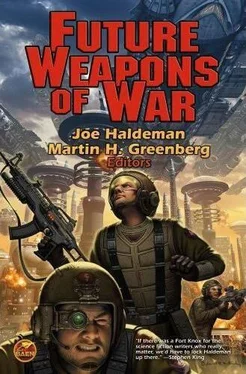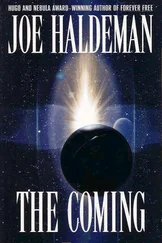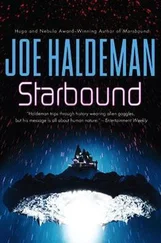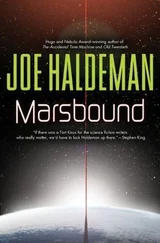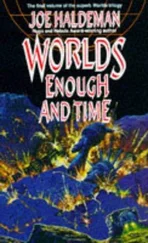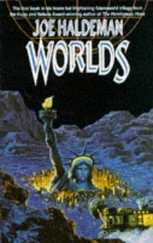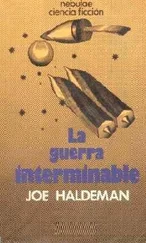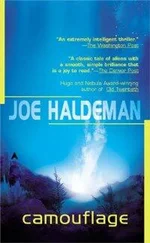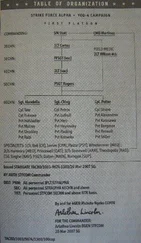Sixty million years in the distant past, a pre-Civilization scientist named Kardeshev had first suggested a mode for describing extraterrestrial civilizations, should they ever be encountered. A civilization utilizing the energy and material resources of a single world—and generating about 10 watts of power—was designated K1. One that employed the resources of an entire star system, or roughly 1026watts, would be a K2. On that scale, Kardeshev’s world might have been rated as a very tentative K0.7; that of Selan and Valova, utilizing some 1031watts, was a solid K2.5.
“Look,” Valova said, opening an informational download window within both of their minds.
“The Galaxy—the Galaxy as we know it, anyway—is doomed! Andromeda will tear it to shreds.”
Within the window, an AI simulation unfolded, revealing the future as determined by cosmology and the laws of physics. Two spiral galaxies, with their attendant satellites, drifted in the Void, the inset scale showing their separation as some two million light-years. Years passed, flickering away at millions per second. The two spirals—the galaxy known as M-31 or the Andromedan galaxy, and the galaxy that was home to Humankind—were on a collision course, the separation between them dwindling.
Less than three billion years into the future, both galaxies began showing marked distortions in the shapes of their spiral arms as they rotated. A few hundred million years later, Andromeda and the smaller home Galaxy of Man plunged through one another, the tidal disruption flinging clouds of stars outward in all directions. Hot, young stars flared into short-lived brilliance as gas clouds interpenetrated and collapsed.
It was not a direct central impact, and both galaxies retained much of their original shapes.
Obeying the ancient laws of Newton, however, the two remnant spiral knots slowed, swung about, came together, and collided once again after another billion years. This time, only the much-shrunken remnant of Andromeda survived as anything like a coherent structure, as the larger galactic nucleus devoured the smaller. What remained was a raggedly elliptical mass of newborn suns swarming about a dense double-knot of newborn stars and flaring supernovae.
The majority of stars from both systems were flung outward into the emptiness of intergalactic space.
“So?” Selan asked her partner. “The distances between the stars of both galaxies are so vast there will be few, if any, stellar collisions. Over the course of a billion years or so, tidal interactions will tear both galaxies apart, yes, but that won’t affect the individual stellar systems. Civilization— all civilizations, I should say—will continue.”
“Are you an Isolationist, Selan? You talk as though you are.”
“Not at all. I simply see no need to embrace this galactic view so many have been discussing lately. If it’s really a problem, why, then, technology will find a way.”
“Technology?” Valova could not show emotion through its glittering sensors, but emotive packets revealed both surprise and disdain.“ Technology? We’re talking about diverting an entire galaxy here! One twice as large and as massive as our own!”
“So?” Selan held out her upper-left arm, and concentrated for a moment. The habitat’s AI picked up the thought, and a vial of nutrient materialized in her hand. She took a dainty sip. “We manipulate matter and energy at a quantum level” she said. “On a small scale, it’s true… but we pull matter from the chaos of empty vacuum. We manipulate space, and thereby gravity. We can make gravity to order, or abolish it. A billion years from now, what will Mind be capable of? Rather, of what will it not be capable?”
“I believe you trust too much in the power of technology,” the cyborg replied. “In the long run, overreliance on our own abilities, in isolation from the larger Group Mind beyond, is dangerous. Isolationism is not viable.”
“Neither is a superstitious reliance upon the Galactics as some kind of deities, who will solve our problems for us,” Selan snapped. “I see no point in continuing this discussion.”
“Nor I.”
Within the Solar culture of that epoch, “partner” referred to a long-term relationship that had little to do with sex or reproduction, and much to do with philosophical concerns and a symbiosis of avocation and point of view. Their disagreement proved to be the first serious rift between increasingly divergent world views; a few centuries later, Selan and three like-minded partners—all of them Homo extraterrestrialis, as it happened—left the partnership. Valova’s larger group eventually migrated to the Oort spomeswarm, the still thinly populated fringe of the System, where the view of the Galaxy was unimpeded by Sol or the glow of the Dyson cloud.
Of interest from this new vantage point was the Andromedan galaxy. To the unenhanced vision of Homo sapiens, it had long been just visible to the naked eye as a small patch of haze—little more than a faint and fuzzy star—taking its name from a long-vanished constellation. To the optics of beings like Valova, however, it covered an area over six times that of Earths moon as it had been seen from ancient Earth—before that satellite had been disassembled to fuel the growth of the Dyson cloud. To its eyes, the spiral arms were quite visible. It was easy for Valova to imagine that vast spiral of starlight hurtling down upon it at thirty five kilometers per second. And epochs passed.
* * * *
Ygal24.85
Within the vast and complex tapestry of Galactic his tory, the history of Humankind was a single, almost microscopic thread. Civilization was not, could not be, a constant. Civilizations rose, matured, aged, fell. Like vir tual particles arising from the background foam of the Zero Point Field, unions of thought and world view and purpose came and went, an ephemeral flickering against the Night. More and more often, however, like subatomic particles gathering an illusion of stability, metacivilizations took form, coherent wave forms arising from the background chaos. The Galactics, so disliked by Selan, had been one of these.
But a truly enduring civilization requires a delicate balance between the static and the dynamic.
To grow too swiftly means an inevitable collapse into chaos; to remain static is death. The group of cultures inhabiting the Dyson cloud about Sol, like many tens of millions of other civilizations across the Galaxy, found stability in its sheer diversity. Individual civilizations came and went, none enduring more than a few million years, each adding somewhat to the growth and knowledge of the whole before fading and being replaced by a new outlook upon the cosmos.
And slowly, the metacivilization of the Galaxy as a whole took firmer and deeper root. A billion years or so after the time of Selan and Valova, a loose association of very long-lived cultures had emerged as a kind of Caretaker civilization, though its antecedent cultures had first appeared long before Earth or its sun had emerged from their stellar nursery. Physically located within a swarm of world-sized habitats drawing energy from the black holes, massed suns, and intense radiation fields of the Galactic Core, they were primarily focused on extending and deepening the reach and scope of a genuine K3 civilization, a confederation of Mind known by a symbol that might translate as “the Conclave.”
To employ imperfect metaphor, if the Galaxy was the body and the Conclave the brain, Sol and its teeming trillions were a single cell within the body’s far-flung nervous system. Sol, by this time, was the heart of a thriving, stable K2.0 civilization; Galactic civilization as a whole, as represented by the myriad worlds of the Core, might have been pegged at K3.1.
Читать дальше
